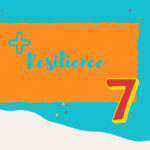This generation, the digital generation, has never known life without a computer or the Internet. Screen time use has doubled in children over the last 20 years, and studies have linked high levels of screen time with delayed development in children. Dr. Aric Sigman, an associate fellow of the British Psychological Society and a Fellow of Britain’s Royal Society of Medicine, says:
Too much screen time too soon is the very thing impeding the development of the abilities that parents are so eager to foster through the tablets. The ability to focus, to concentrate, to lend attention, to sense other people’s attitudes and communicate with them, to build a large vocabulary—all those abilities are harmed.
But it isn’t easy to just unplug – parenting in the digital age also requires that we recognize our own habits. Not only do children mimic our own digital attachments, we also know from previous studies that limiting this face-to-face contact via extensive phone use could cause problems with development and reduce the level of bond between a parent and a child. A more recent study shows us that parents who spend more time with their phones have a greater tendency to shout at their children, while children also feel an increase in frustration, moodiness, and attention-seeking.
Information Session at Creating Together
In the face of this, Creating Together is offering 2 information sessions on Screentime for Children – one on February 10th at 1:30, and the other on the 28th at 10am.

Tips
Apart from the Information Sessions this month, here are a few tips:
- Set Limits to Screen Time – Limits help build healthy habits for the future. Create rules to limit screen time and share them with the other adults in your child’s life as well to ensure consistency. There are plenty of apps that provide parental controls to block sites, and enforce time limits (no screen time for children under 2, and less than 1hr / d for children ages 2-5).
- Be a Good Example – Children are more likely to act-out in order to get your attention when you’re distracted. Model healthy screen habits by engaging your child with play and books that build their brain and social development.
- Create Healthy Habits – Keep devices in a common area so you can monitor age-appropriate use, while watching and talking to them. It’s also a healthy habit to turn off all screens an hour before bed to ensure a better sleep hygiene, and turn it off during mealtimes.
- Get Outside – be it the snow, the rain, or the sun, there are plenty of games to enjoy outside to help you replace screen time with green time.
Continue the Conversation!
Interested in learning more, and sharing some strategies with other parents and caregivers? Speak with your family and friends to gauge tips and trends – and bring them with you to our next information session on February 28th at 10am.
See you there!








 Self-awareness
Self-awareness Immunity
Immunity Imagination
Imagination Knowledge
Knowledge Optimism
Optimism Resilience
Resilience